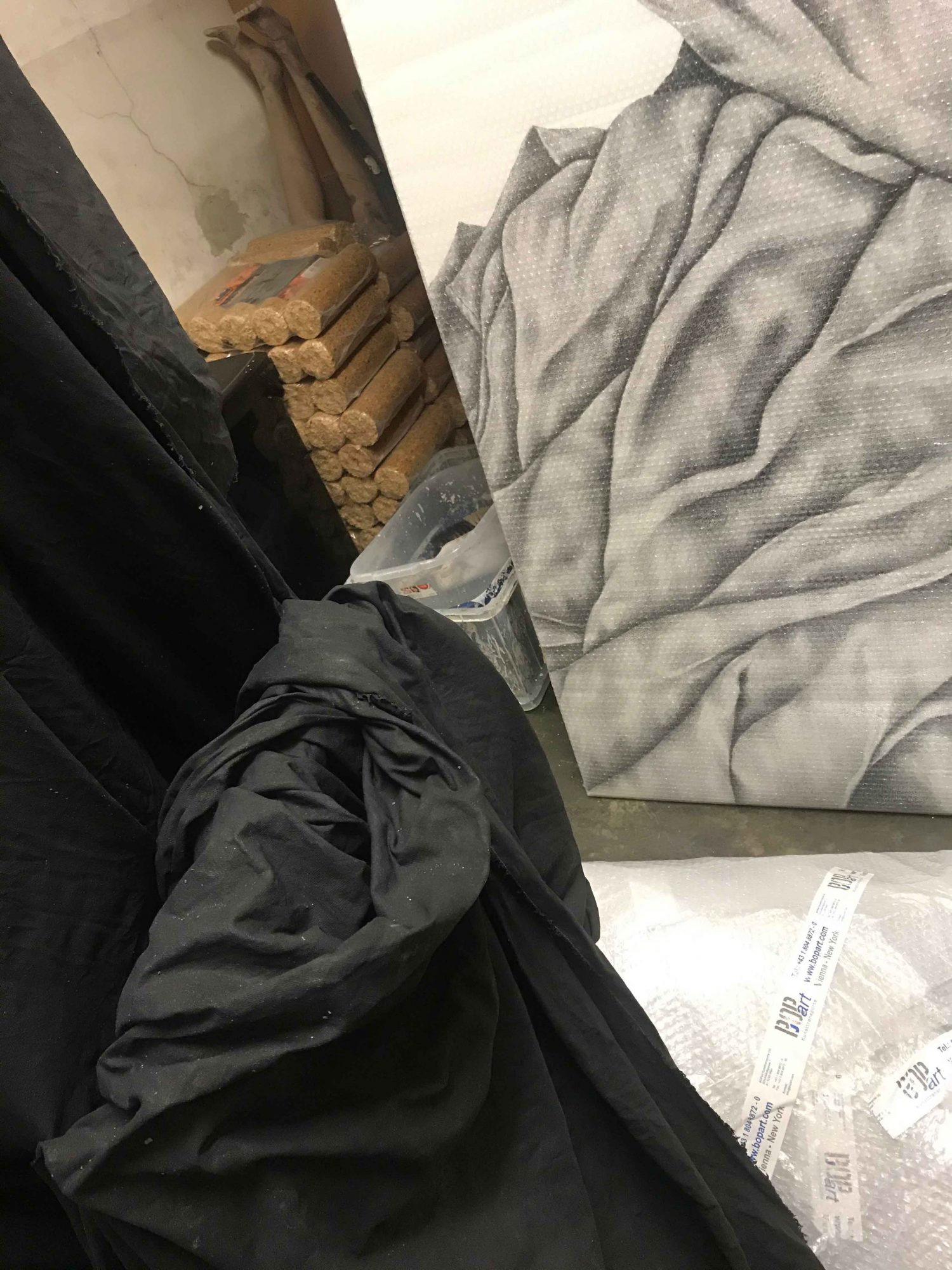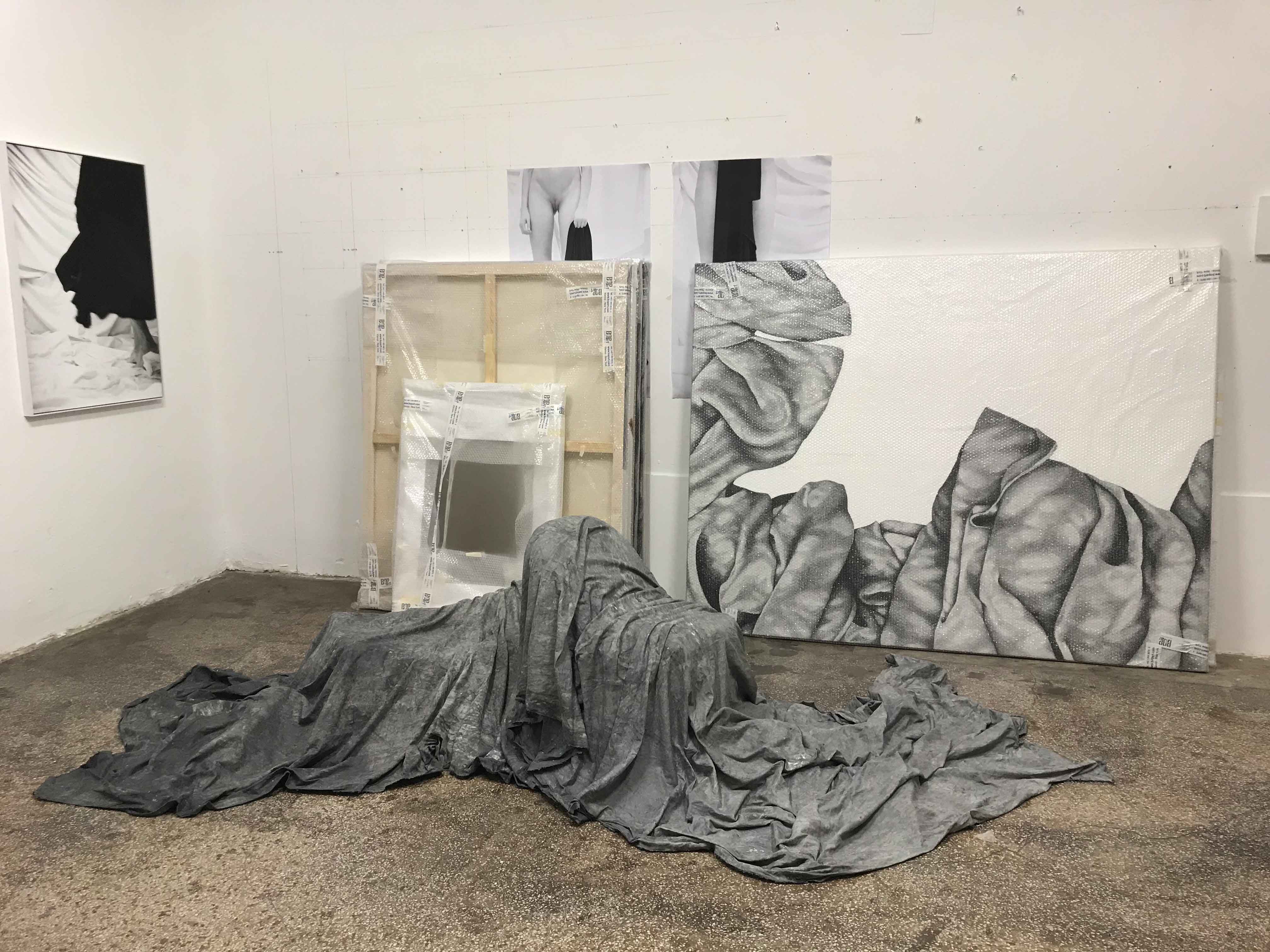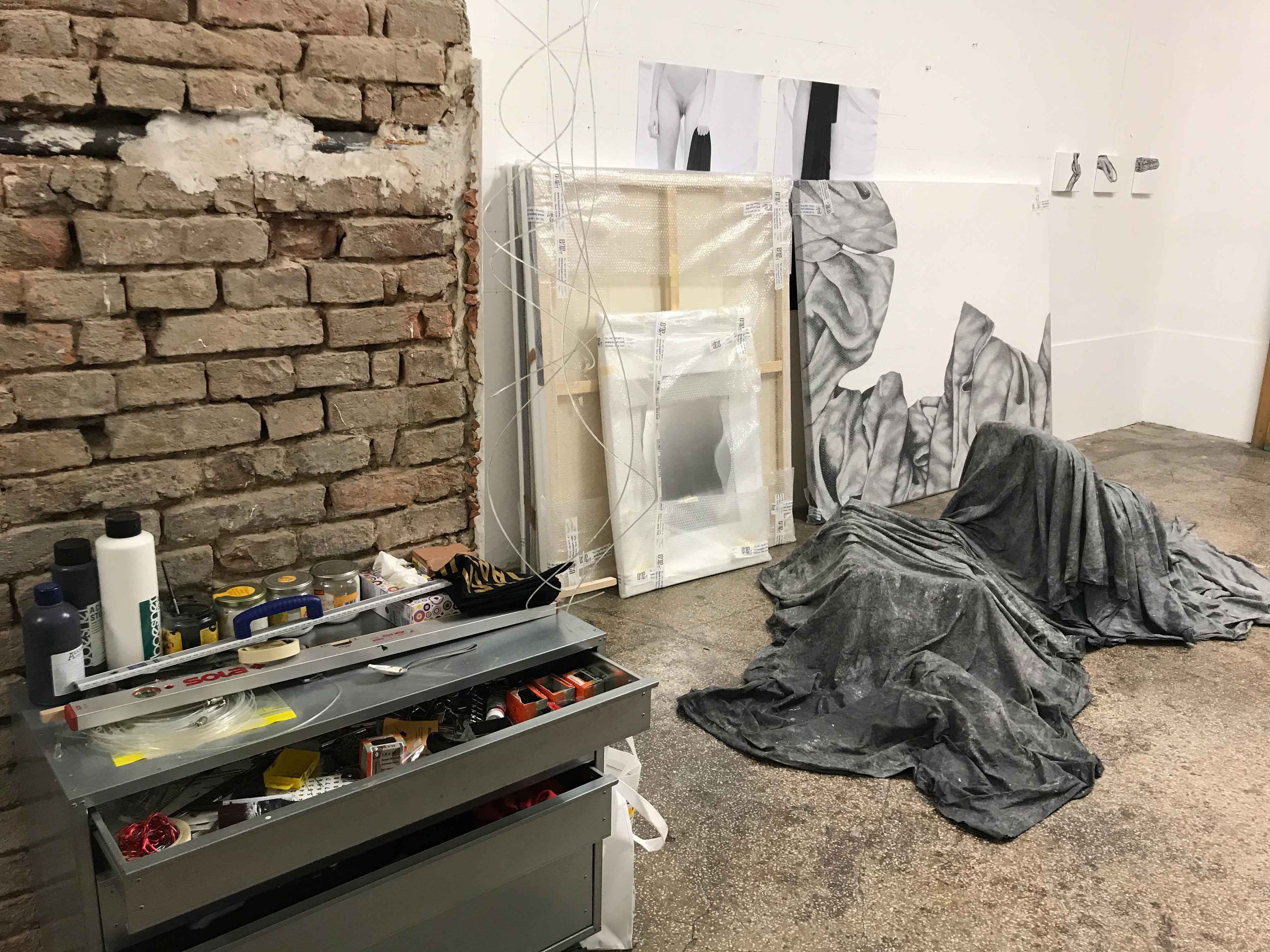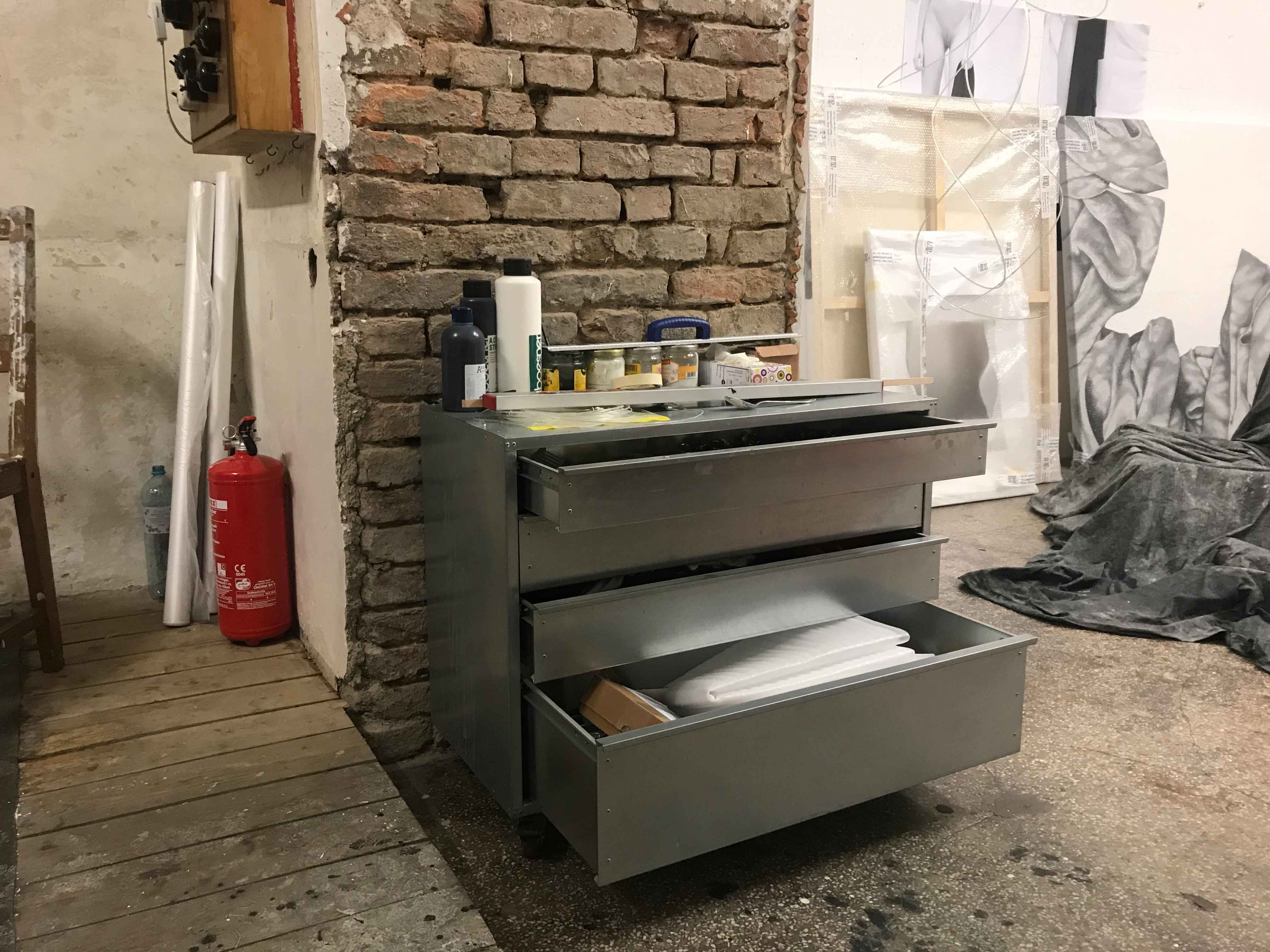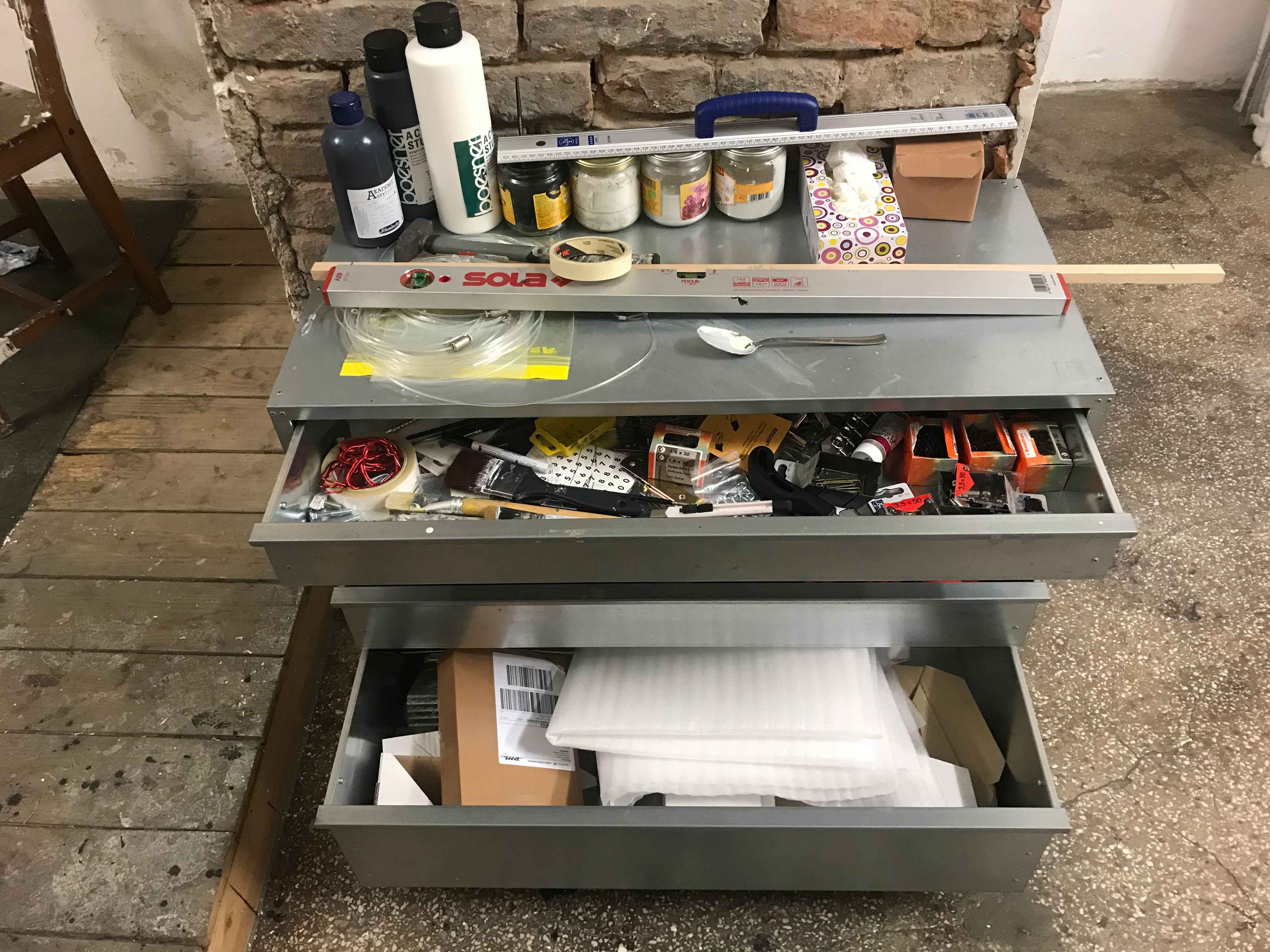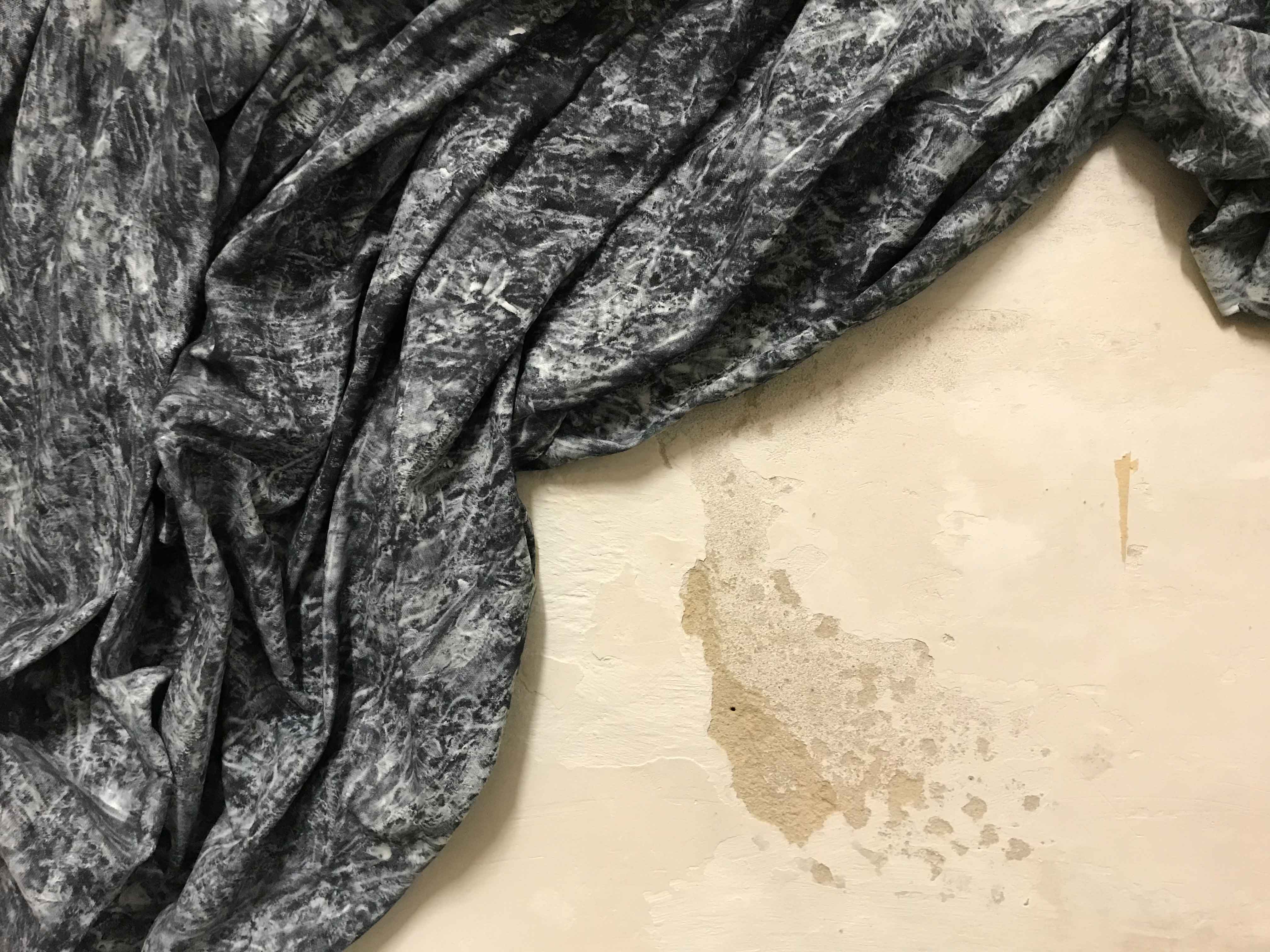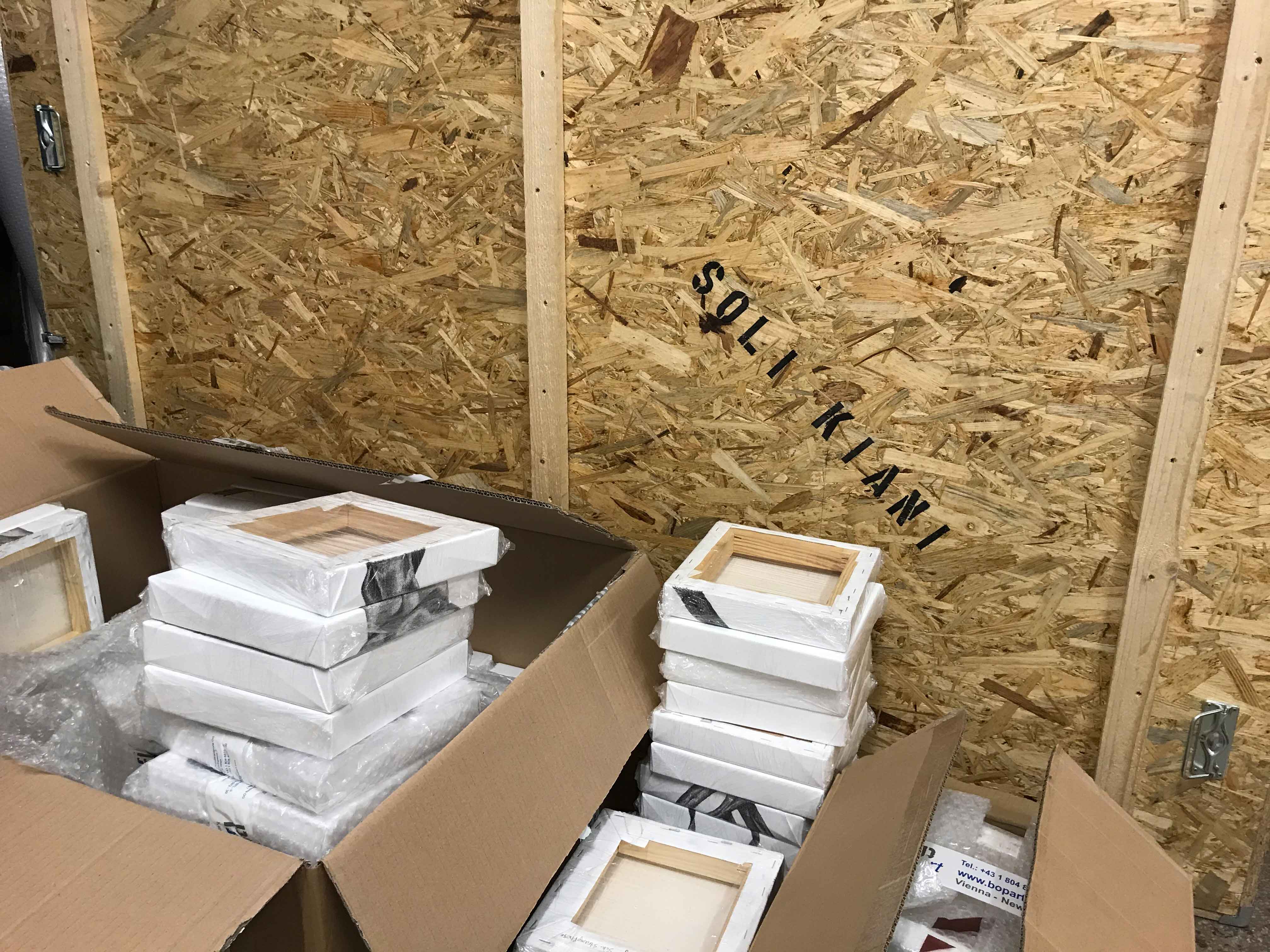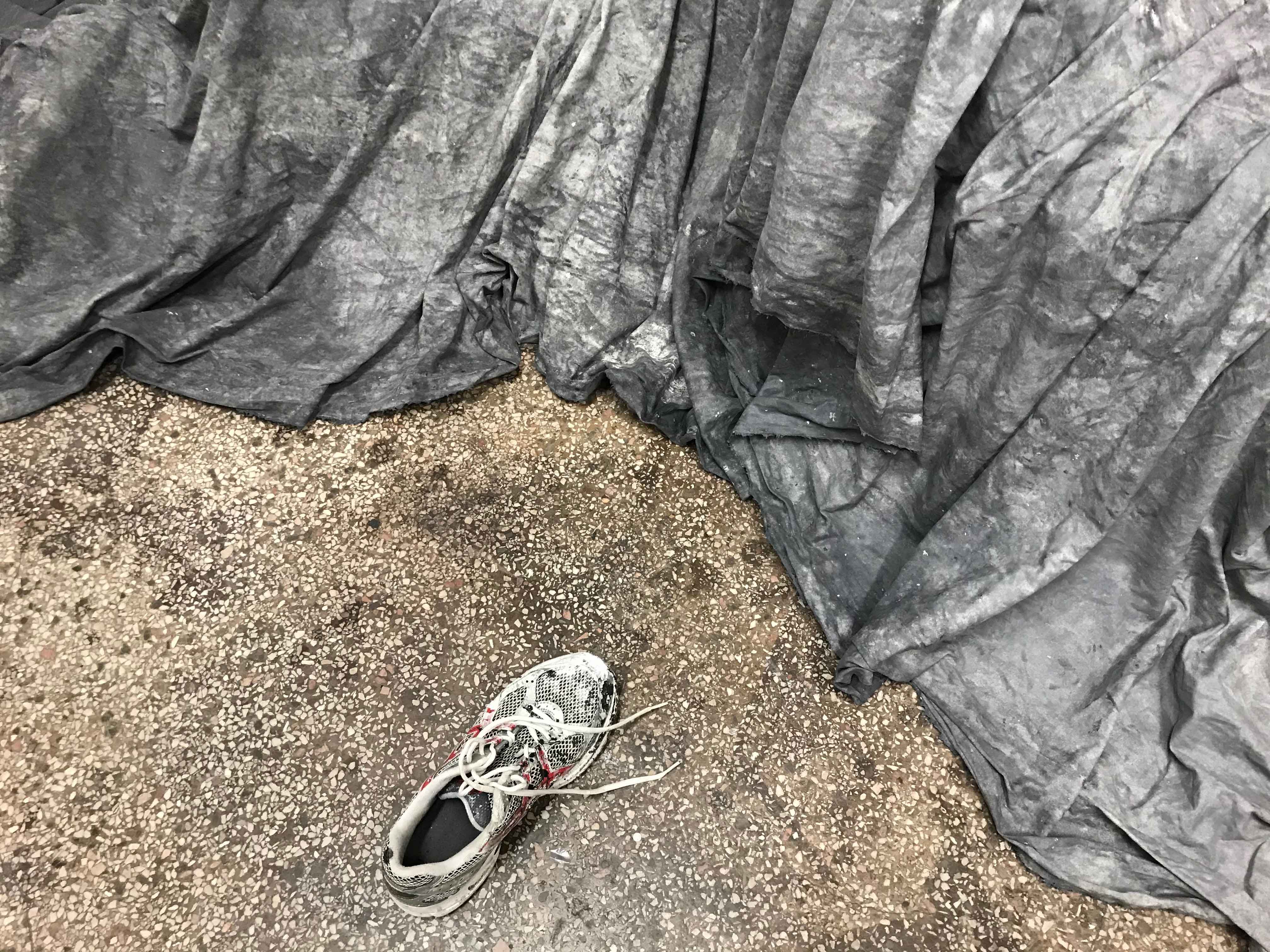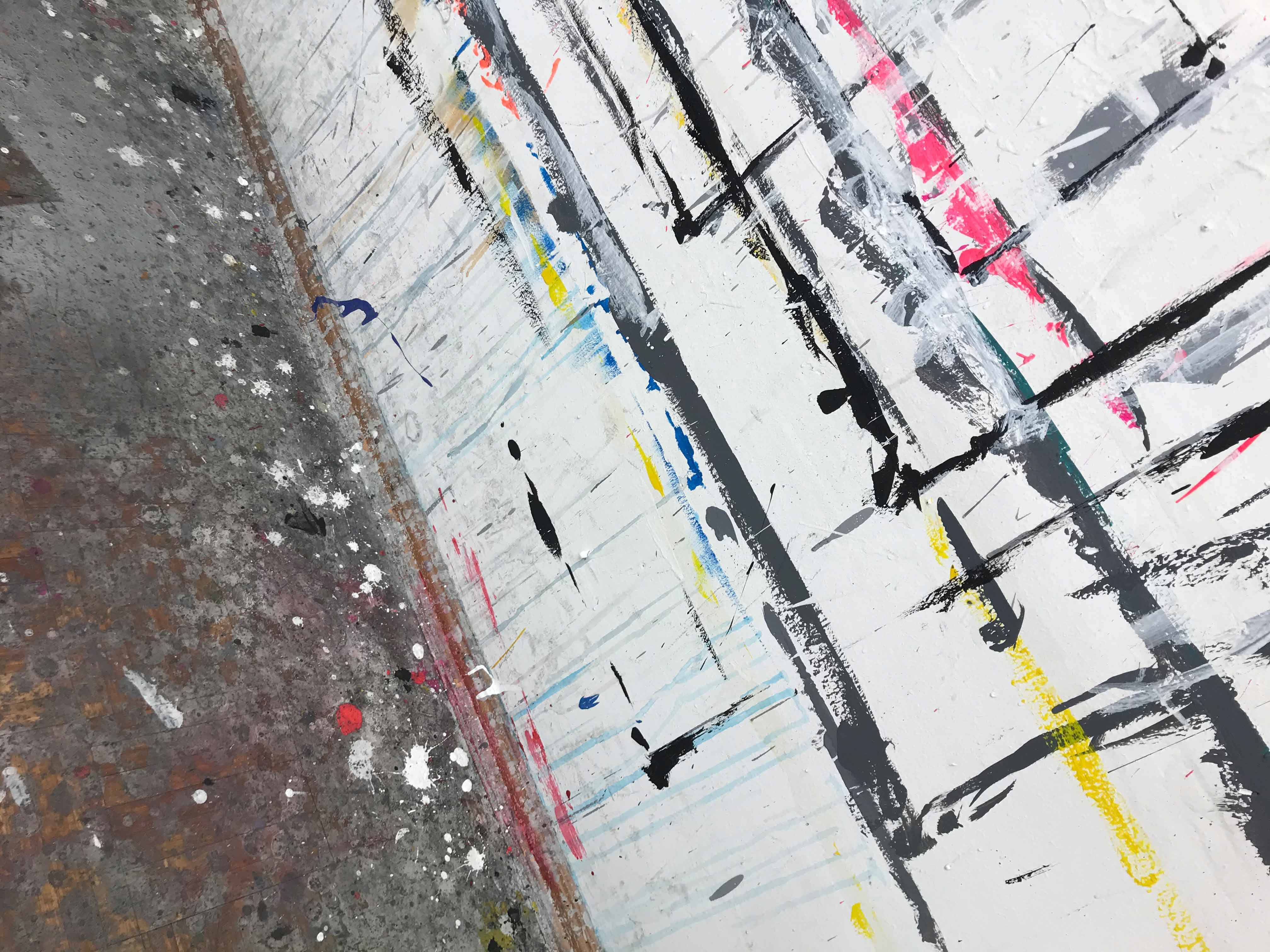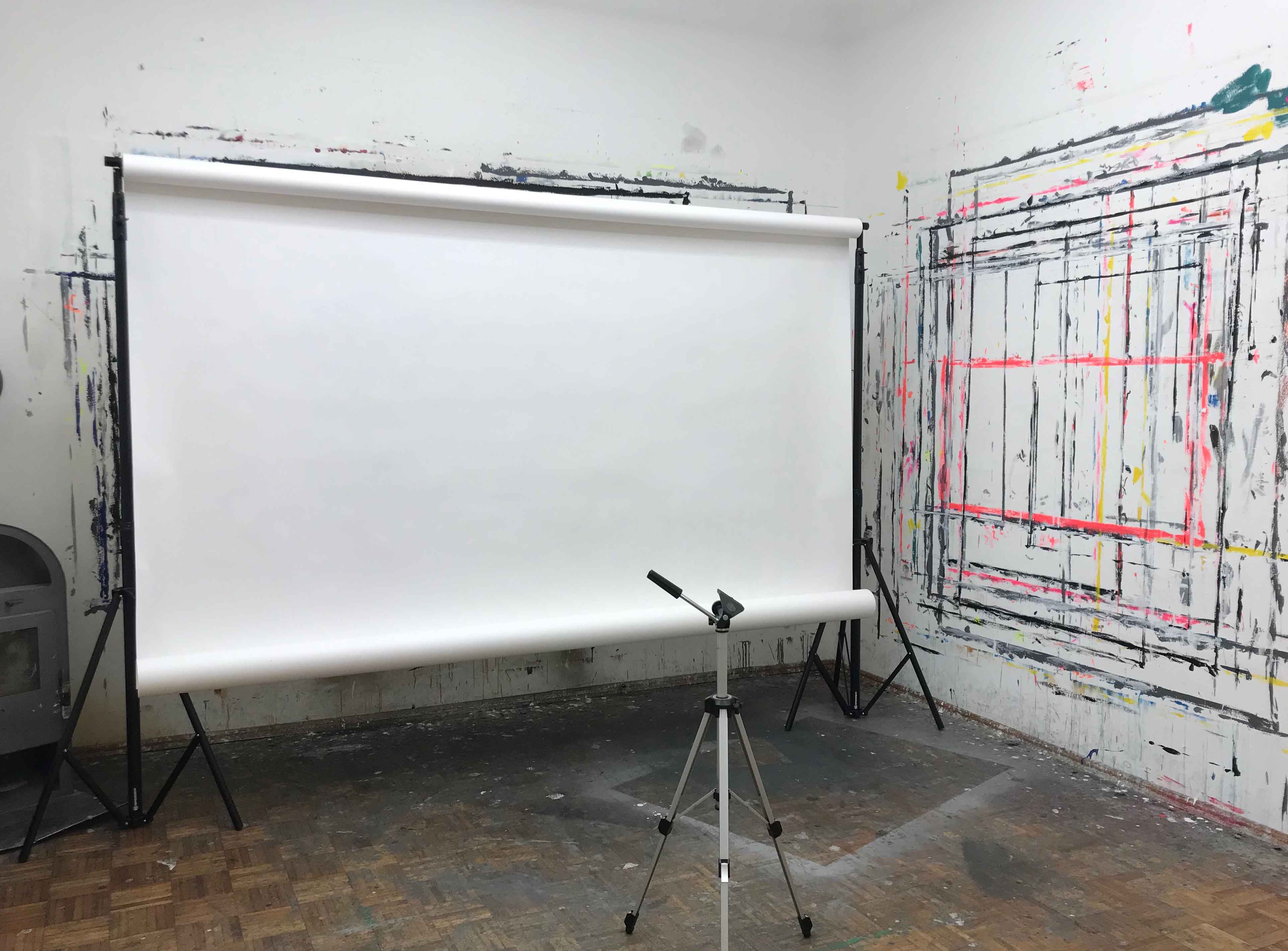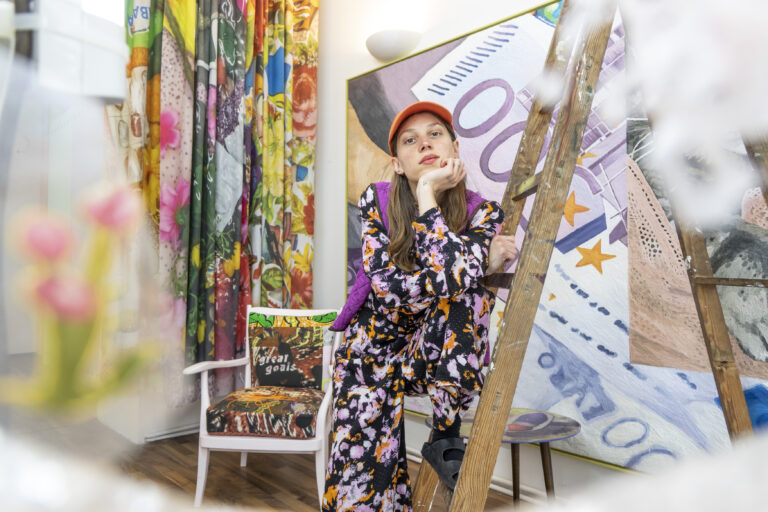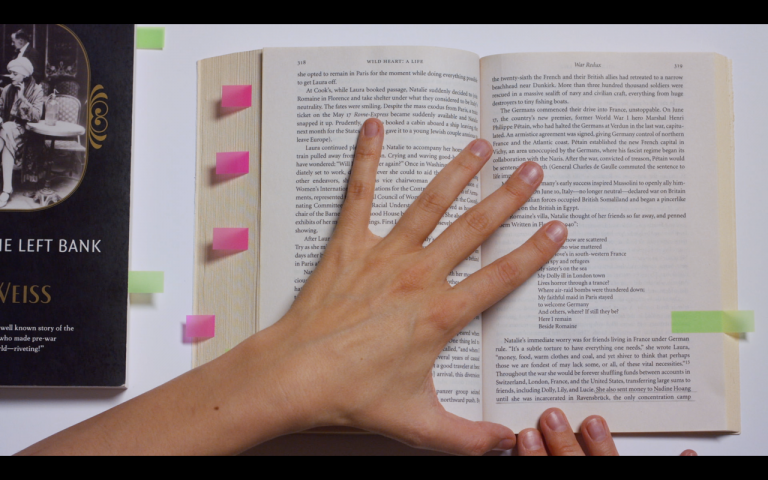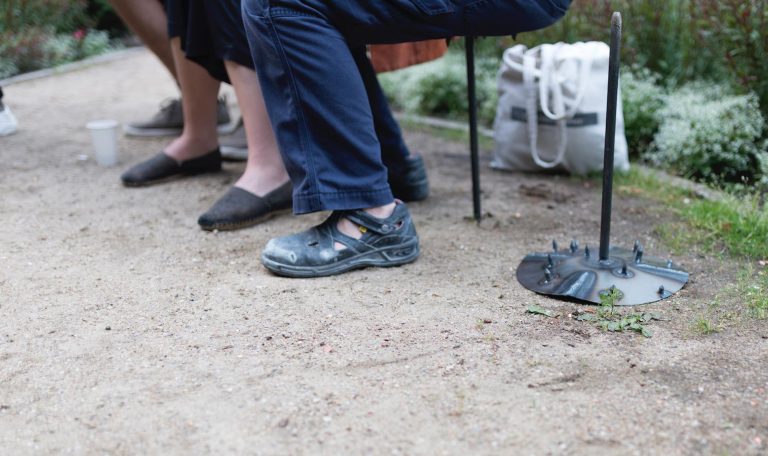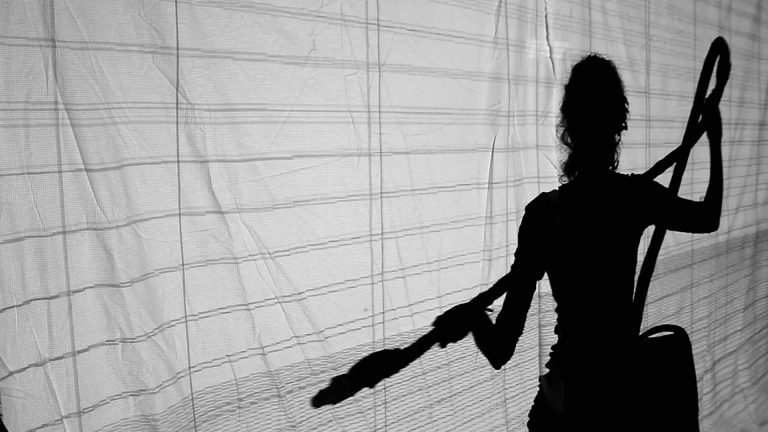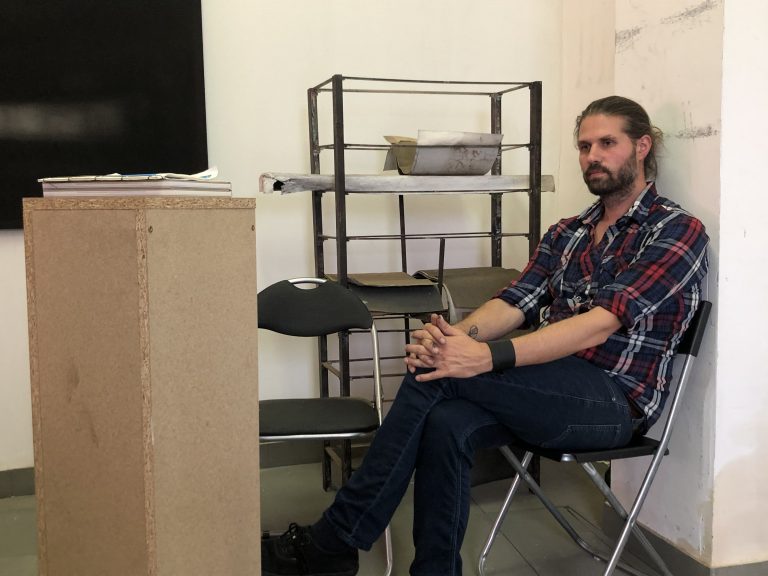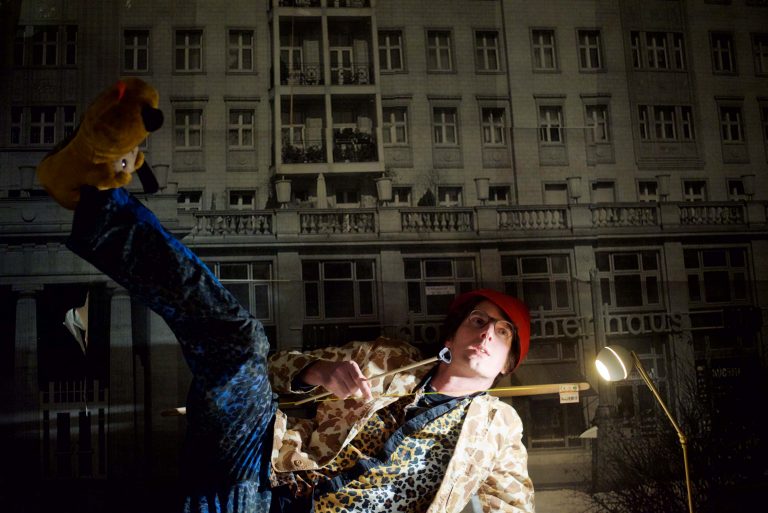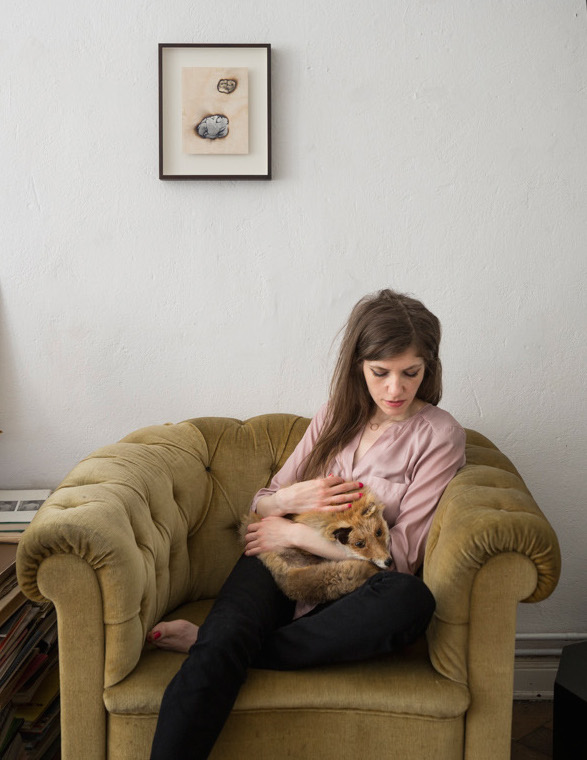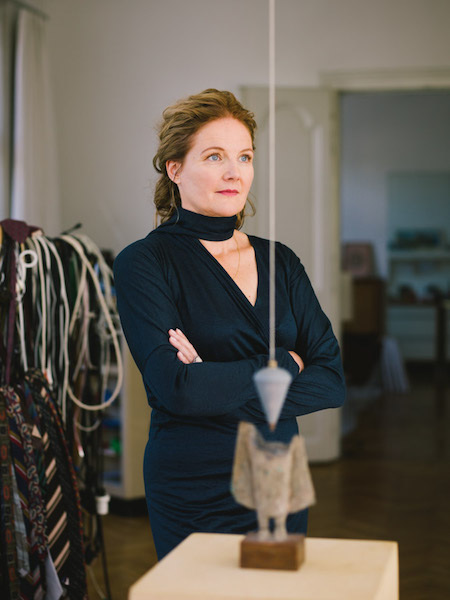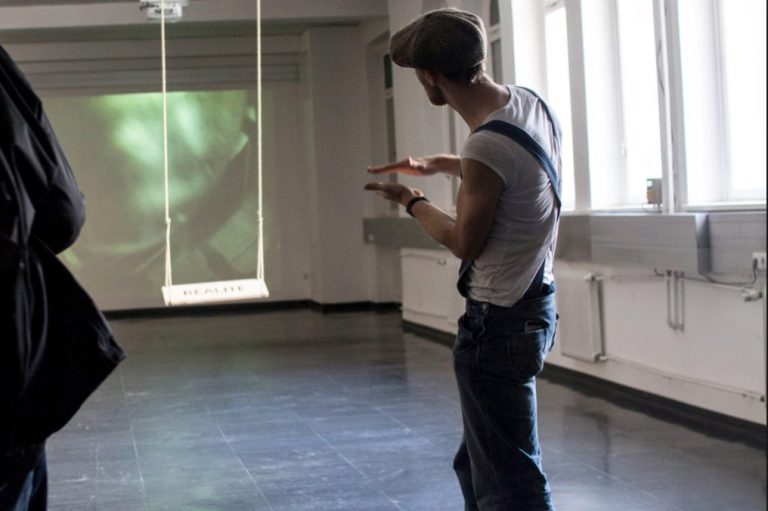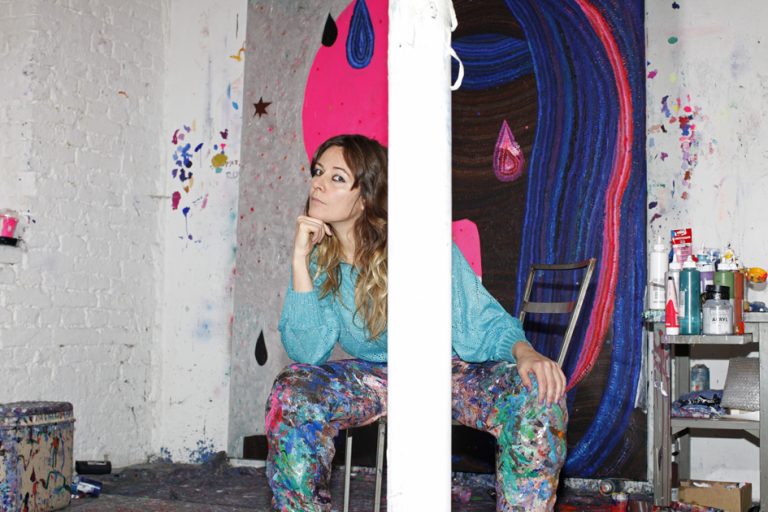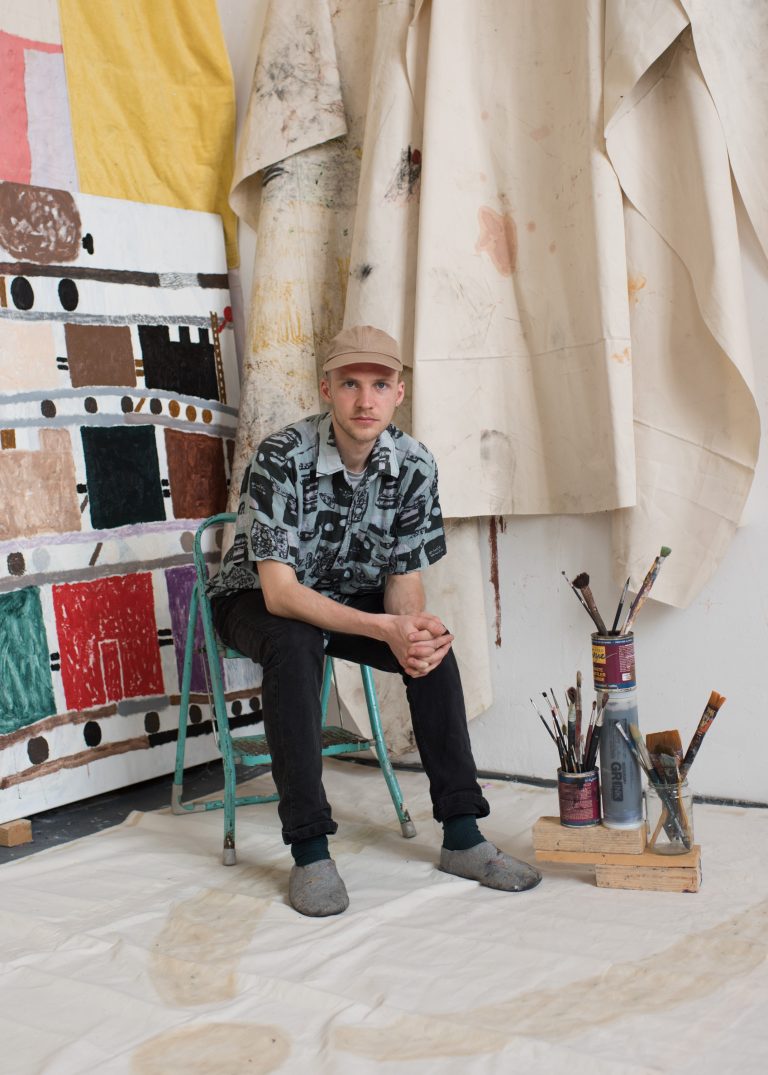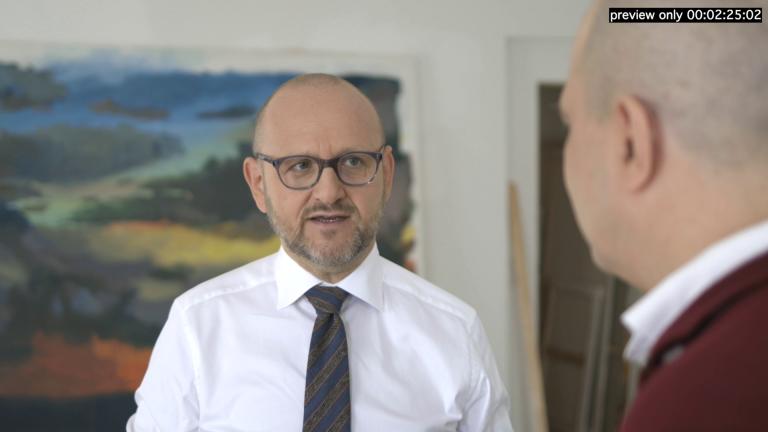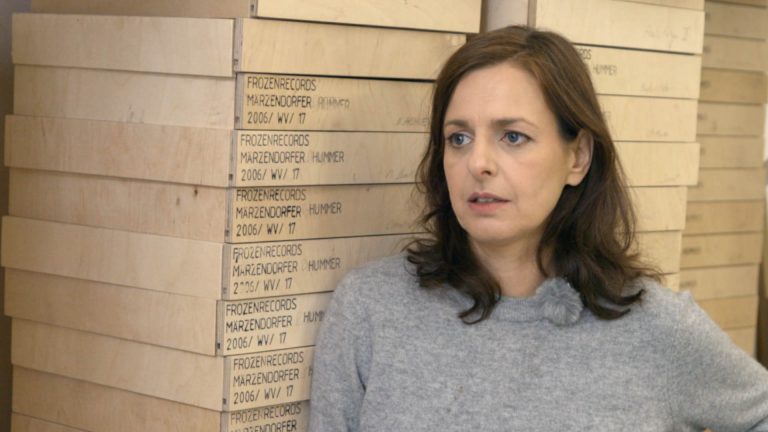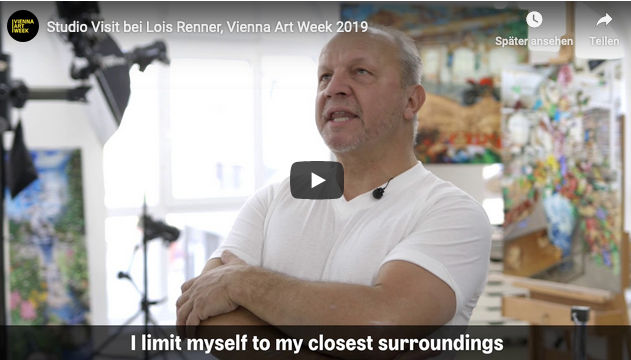Soli Kiani
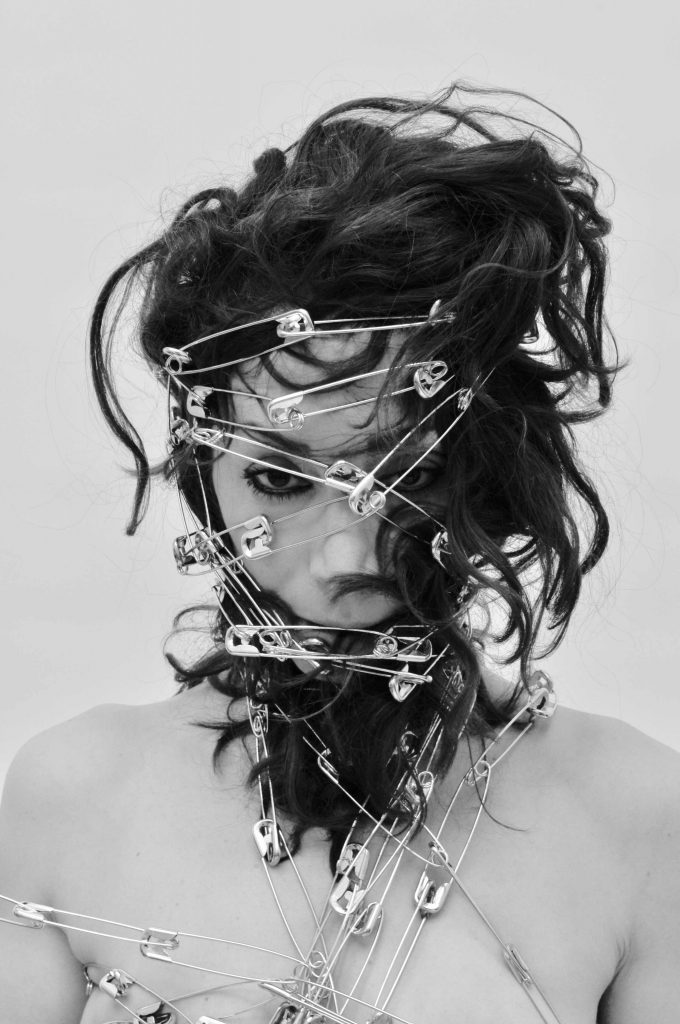
Selfportrait, Soli Kiani, 2018 © Soli Kiani
Artists working in Vienna tell us what drives them, what they are currently working on and how they proceed. Exclusively for MEET THE ARTIST, they show their latest works while they are still in the process of creation. We will be talking to artists whose studios were to be discovered during the Open Studio Days 2019.
Soli, you were born in Iran, in what way does your origin influence your artistic work?
Soli Kiani: In my work I deal with the issue of the non-existent human rights in Iran and Islam, the country and religion in which I was socialized. Above all, women’s rights are of great concern to me, because according to Islamic law in Iran women are even more disadvantaged than men. My work is conceptually, religiously and socio-politically critical with an autobiographical background.
What are you working on right now?
I’ve been using the last days of initial restriction and isolation to update my database and to reorganize my studio to make more space for new ideas and work. From this week on I will dedicate myself more to the medium of photography, standing in front of the camera as well as behind the camera.
The beginning is half of the whole, says Aristotle. Another proverb says it is difficult – like the first stroke on a white canvas, for example. How do you start a new work?
There’s a lot of truth in that. I read and research a lot before I start the practical part or the creative process. However, I have an experimental approach to the artistic realization of my ideas, so the so-called “fear of the white canvas” is not present in my work.
Can you give us an example of how you come up with a new idea for a work through experimentation?
The idea is born before I start the creative process. I have an experimental approach to the artistic realization of my ideas, but new things also emerge while I am working on a first or original idea, such as the series “Plastische Malerei”. Initially, chadors (burqas) laid on the floor in draperies were my reference for oil chalk drawings on canvases painted with acrylic. Later they became the material for the series “Plastic Painting”. In this series I dye linen fabrics with white or black acrylic paint, then fix these linen fabrics as partly controlled and partly random draperies and present them either on the floor, on the wall or in the room. The objects are always in dialogue with my photographic works or paintings/drawings. Last but not least, both series consist of the same materials: acrylic and linen fabric. This is where the name “Plastische Malerei” comes from. I would like to ask the question, what painting may, can and should be!
Textile materials often appear in your works, what meaning do they have for you?
Yes, often a textile is the starting point of my artistic production, whereby I attribute a metaphorical meaning of “chador” to such a textile. The “chador” literally means tent in Farsi, but usually refers to the mostly dark cloth worn by Muslim women in Iran as a long veil covering the head and sometimes the face and body. The topics of clothing, fabrics and fashion have played a rather dominant role in my life. Fabric was not only clothing, but also a protective cloak and a prison of my identity.
How or where do you find inspiration?
Soli Kiani: I find inspiration in the books and biographies of women and men who fight for human rights in Iran, for example Shirin Ebadi, Masih Alinejad, or Forough Farrokhzad. I also deal with the legal situation and of course I process my youth in Iran and the experiences connected with it.
Do you have a personal work ritual that you like to follow?
My personal work ritual has two phases: Phase one is reading, researching and collecting material, phase two is artistic execution.
What is especially important to you about your studio?
A good feel, peace and quietness that I need to work.
INSTAGRAM.com/solikiani
